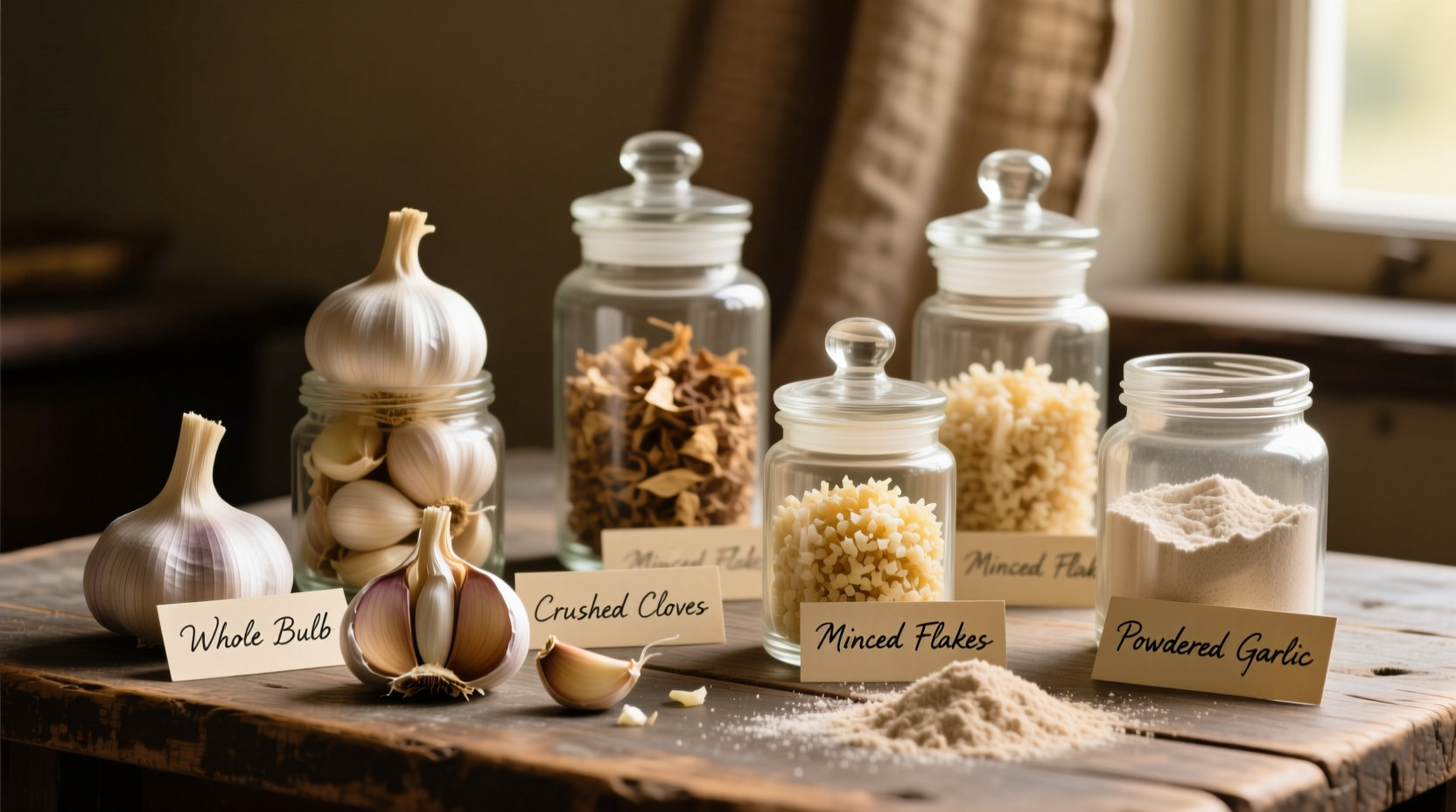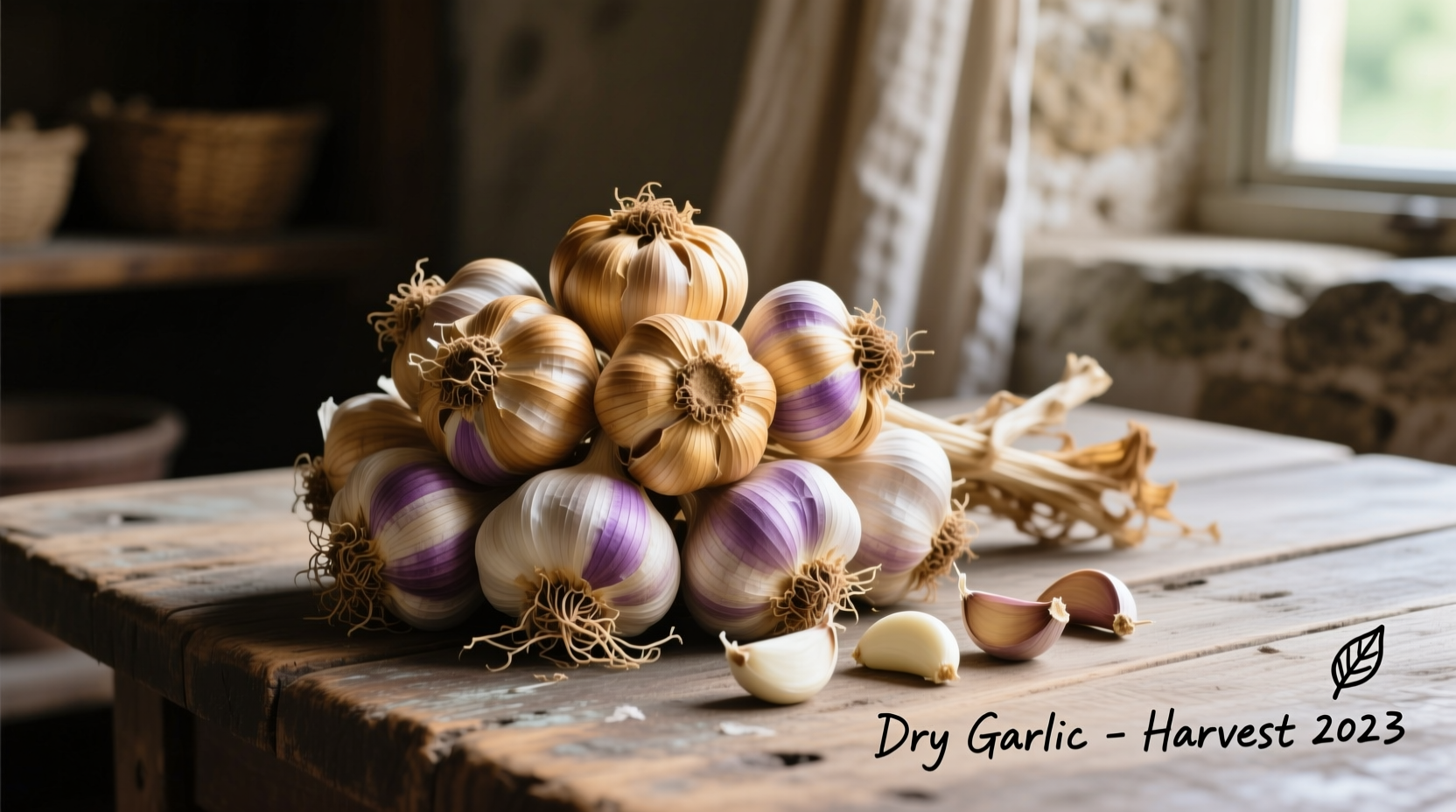Unlock the full potential of your pantry staples with this comprehensive guide to dry garlic. Whether you're a home cook looking to elevate everyday meals or a culinary enthusiast exploring flavor science, you'll discover exactly when and how to use dried garlic for perfect results every time. Learn professional techniques for maximizing flavor, avoiding common mistakes, and understanding the subtle differences between garlic powder, granules, and flakes.
What Exactly Is Dry Garlic and Why It Matters
Dry garlic refers to garlic that has undergone dehydration to remove moisture content while preserving flavor compounds. Unlike fresh garlic which contains approximately 62% water, dried garlic varieties typically contain less than 6.5% moisture according to USDA food composition data. This dehydration process concentrates certain flavor compounds while altering others, creating a distinct culinary profile that serves specific purposes in cooking.
The primary forms of dry garlic include:
- Garlic powder - Finely ground, dissolves easily
- Garlic granules - Coarser texture, slower dissolution
- Garlic flakes - Minimally processed dried pieces
| Characteristic | Dry Garlic | Fresh Garlic |
|---|---|---|
| Moisture Content | <6.5% | ~62% |
| Allicin Content | Stable but reduced | High (when crushed) |
| Shelf Life | 18-24 months | 3-6 months |
| Flavor Development | Immediate | Requires enzymatic reaction |
This fact comparison, based on USDA National Nutrient Database and research from the Journal of Agricultural and Food Chemistry, reveals why dry garlic behaves differently in cooking applications than its fresh counterpart.
When Dry Garlic Shines: Practical Kitchen Applications
Professional chefs reach for dry garlic in specific scenarios where fresh garlic would be impractical or ineffective. Understanding these context boundaries helps you make better ingredient choices:
Dry Rubs and Spice Blends
Dry garlic integrates seamlessly into rubs for meats, poultry, and vegetables. Its consistent particle size ensures even distribution without creating wet spots that could prevent proper searing. For authentic results, use garlic granules rather than powder in dry rubs—they provide texture and visual appeal while delivering consistent flavor.
Long-Simmered Dishes
In soups, stews, and sauces that cook for extended periods, dry garlic maintains its flavor integrity better than fresh garlic, which can become bitter when cooked too long. Add dry garlic during the last 30 minutes of cooking to preserve its aromatic compounds.
Commercial Food Production
Food manufacturers rely on dry garlic for consistent flavor in packaged products. According to the Food and Drug Administration's guidelines on spice standardization, dry garlic provides reliable flavor delivery in commercial applications where fresh garlic's variability would be problematic.

Mastering Dry Garlic Storage for Maximum Freshness
Proper storage dramatically extends dry garlic's shelf life and preserves flavor. Follow this timeline for optimal results:
- 0-6 months: Store in original packaging if unopened
- 6-12 months: Transfer to airtight glass container after opening
- 12-18 months: Keep in cool, dark pantry away from heat sources
- 18+ months: Flavor intensity begins significant decline
The National Center for Home Food Preservation recommends storing dry garlic at temperatures below 70°F (21°C) with humidity under 60%. Exposure to light accelerates flavor degradation—amber glass containers provide optimal protection. Never store dry garlic in the refrigerator, as moisture absorption causes clumping and flavor loss.
Precise Conversion Guide: Dry to Fresh and Back
Getting conversions wrong is the most common dry garlic mistake. Use this professional reference for accurate substitutions:
| Dry Garlic Form | Equivalent to 1 Fresh Clove | Best For |
|---|---|---|
| Garlic powder | 1/8 teaspoon | Liquids, dressings, fine-textured dishes |
| Garlic granules | 1/4 teaspoon | Dry rubs, roasted vegetables, meats |
| Garlic flakes | 1/2 teaspoon | Stews, soups, slow-cooked dishes |
Remember that these ratios assume standard-sized fresh garlic cloves (about 1 inch long). For larger elephant garlic varieties, adjust proportions accordingly. When substituting fresh for dry garlic, use 1 small clove per 1/8 teaspoon of powder—but note that fresh garlic requires enzymatic activation (crushing or chopping) to develop full flavor.
Avoiding Common Dry Garlic Mistakes
Even experienced cooks make these critical errors with dry garlic:
Overheating in Oil
Dry garlic burns at lower temperatures than fresh garlic. When sautéing, add dry garlic during the last minute of cooking rather than at the beginning. Burnt dry garlic develops bitter, acrid flavors that cannot be salvaged.
Using Expired Product
Dry garlic doesn't spoil but loses potency over time. Test freshness by rubbing a small amount between your fingers—if you don't detect a strong aroma, it's time to replace it. The Specialty Food Association notes that properly stored dry garlic maintains peak flavor for 18-24 months.
Incorrect Measurement
Always measure dry garlic with proper measuring spoons, not eyeballing. Due to its concentrated nature, just 1/16 teaspoon too much can overpower a dish. For precision in small batches, use a digital scale—1/8 teaspoon garlic powder weighs approximately 0.6 grams.
When Fresh Garlic Is Non-Negotiable
Dry garlic excels in specific applications but cannot replicate fresh garlic's complex flavor profile in all situations. Reserve fresh garlic for:
- Raw applications like aioli, vinaigrettes, and bruschetta
- Dishes where garlic is the star ingredient
- Recipes requiring the distinctive pungency of raw garlic
- When making garlic-infused oils (dry garlic doesn't extract properly)
Understanding these context boundaries prevents disappointing results. As the Culinary Institute of America's flavor science research demonstrates, fresh and dry garlic activate different flavor receptors—neither is "better," but each serves specific culinary purposes.











 浙公网安备
33010002000092号
浙公网安备
33010002000092号 浙B2-20120091-4
浙B2-20120091-4